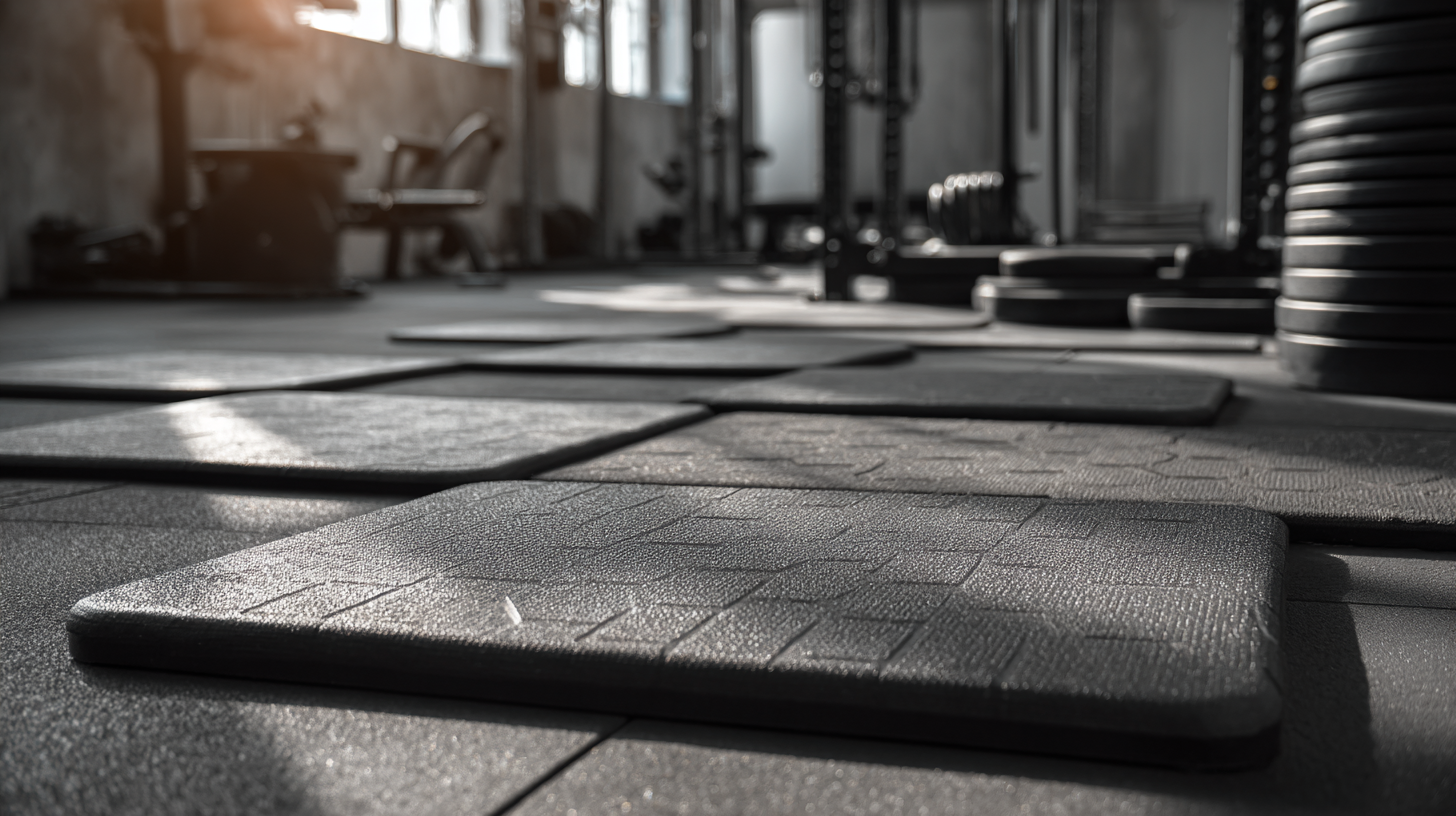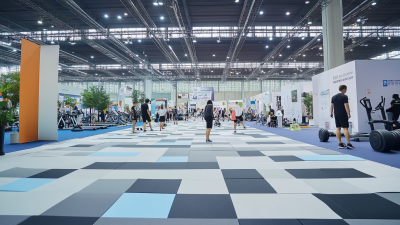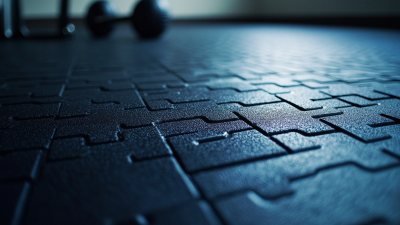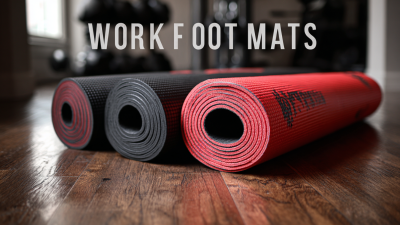When creating the perfect home workout space, selecting the right Gym Flooring Mats can significantly impact both performance and safety. According to a report by the IHRSA, the home fitness market has seen a remarkable growth of over 170% in the past year, as more individuals seek effective ways to maintain their health. Proper flooring is essential for absorbing shock, reducing noise, and preventing injuries during workouts. In fact, studies from the American Council on Exercise indicate that inappropriate flooring can lead to a 30% increase in joint strain during high-impact exercises. With a variety of mats available, understanding the specific needs of your workout routine and the materials used can help you make an informed decision. This guide aims to provide insights into choosing the best Gym Flooring Mats, ensuring that your home fitness environment is both safe and effective.

When setting up a home workout space, selecting the right gym flooring mats is crucial for both injury prevention and performance enhancement. High-quality mats provide a cushioned surface that reduces the risk of slips, falls, and joint strain during exercise. This is especially important for high-impact workouts such as jumping, running, or weightlifting, as a softer surface can absorb shock and lessen the stress put on knees and ankles.

Additionally, gym flooring mats can enhance performance by offering better traction and stability. A non-slip surface allows individuals to maintain their balance and focus on their movements, leading to improved exercise efficiency. Whether engaging in yoga, Pilates, or strength training, the right flooring can boost confidence and encourage individuals to push their limits, ultimately contributing to a more effective workout experience. Selecting mats specifically designed for your workout type can make a significant difference in overall performance and safety.
When it comes to selecting the best gym flooring mats for your home workout space, understanding the materials used is crucial. One popular material in the market is EVA foam, known for its soft yet stable surface. This makes it ideal for floor-based exercises, stretching, and light workouts. Mats made from EVA foam provide a comfortable experience while ensuring enough stability for various movements.

In addition to EVA foam, rubber flooring options are becoming increasingly popular for home gyms, especially over concrete surfaces. Rubber rolls, like the 8mm variants, offer both durability and sound insulation, making them a strong choice for heavier equipment and intense workouts. Furthermore, these materials are usually resistant to wear and tear, ensuring longevity. As the home fitness trend continues to expand, evaluating these materials will help you create an optimal workout environment tailored to your specific needs.
When selecting the best gym flooring mats for your home workout space, understanding the right thickness and density is crucial for optimizing performance and safety. Reports suggest that thicker mats, typically between 0.5 to 1 inch, provide superior shock absorption, which is essential for high-impact exercises. According to a study by the National Institute for Fitness and Sport, using inadequately padded surfaces can lead to increased risk of injury, highlighting the importance of choosing the correct thickness.
Density also plays a significant role in mat selection. Mats with a density of 80 kg/m³ or higher are recommended for areas subjected to heavy weights, as they prevent deformation and provide stable footing. The International Health, Racquet & Sportsclub Association (IHRSA) indicates that a high-density mat effectively distributes weight, reducing wear over time and enhancing durability. For lighter activities, such as yoga or stretching, a mat with lower density around 30 kg/m³ could suffice, offering comfort without compromising stability. Thus, tailoring the thickness and density of your gym flooring mats to your specific workout needs is vital for creating an effective and safe exercise environment.
When it comes to setting up a home gym, the flooring you choose can significantly impact both your workout experience and your budget. Cost-effectiveness is a crucial consideration, as investing in the right gym flooring can yield long-term value. Various options, such as rubber mats, foam tiles, and vinyl flooring, each come with distinct price points and durability factors that influence their overall cost-effectiveness.
Rubber mats, for example, are popular for their resilience and ability to absorb impact, making them ideal for heavy equipment and high-intensity workouts. While they may have a higher initial cost, their longevity and low maintenance needs often make them a smarter choice in the long run. On the other hand, foam tiles, while cheaper upfront, may wear out faster if subjected to heavy use. Analyzing the lifespan and utility of each flooring type helps homeowners align their fitness goals with smart financial planning, ensuring they invest in a flooring solution that provides the best return over time.
| Flooring Type | Cost per Square Foot ($) | Durability (Years) | Shock Absorption (Rating 1-10) | Maintenance Level (Low/Medium/High) | Long-Term Value ($/Year) |
|---|---|---|---|---|---|
| Rubber Tiles | 3.00 | 15 | 9 | Low | 200 |
| Foam Mats | 1.50 | 5 | 6 | Medium | 300 |
| Carpet Tiles | 2.50 | 10 | 4 | Medium | 250 |
| Vinyl Flooring | 2.00 | 20 | 7 | Low | 150 |
| Cork Flooring | 3.50 | 25 | 8 | Medium | 120 |
When it comes to setting up a home workout space, choosing the right gym flooring mats can significantly enhance your exercise experience. According to a report by IBISWorld, the home fitness equipment industry has seen a growth of 23.4% between 2020 and 2021, driven by the surge in at-home workouts during the pandemic. In this booming market, selecting effective flooring mats is crucial for providing both safety and comfort. Popular materials such as rubber and foam offer excellent shock absorption and traction, with rubber mats often rated for durability and longevity.
Top brands in the gym flooring sector, such as ProForm and BalanceFrom, have gained high ratings for their quality and performance. The American Council on Exercise (ACE) recommends mats that are both easy to clean and resistant to moisture, pointing out that many users prefer interlocking tiles for their adaptability to different workout spaces. According to their user reviews, mats with a thickness of 3/4 inch are favored for weight training, while thinner mats around 1/4 inch are ideal for yoga and stretching routines. Knowing these insights can help you make an informed decision when equipping your home gym with the best flooring options available.






